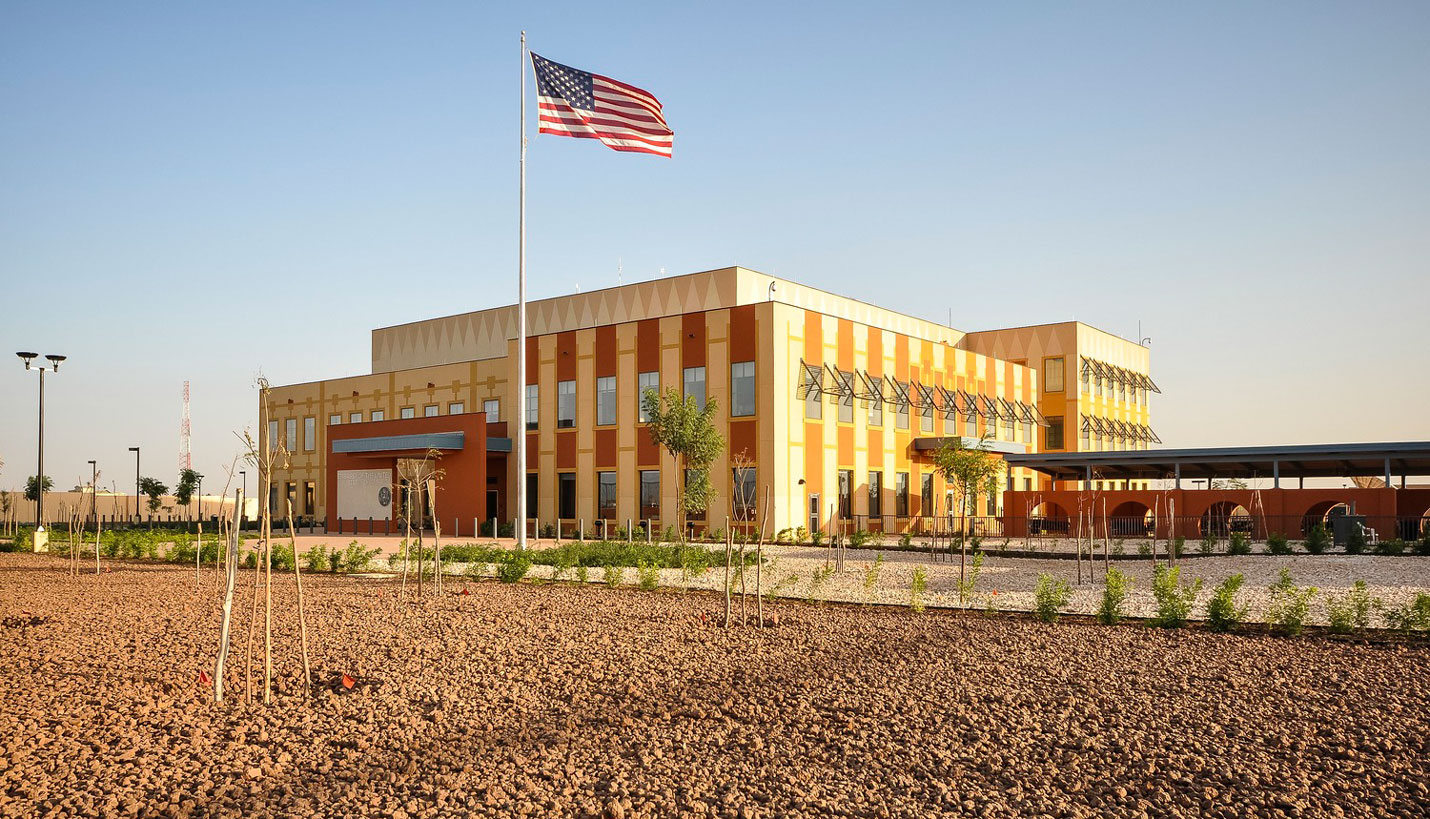

First, dig your moat: Designing buildings for America’s diplomats is getting ever trickier
Page Senior Principal, Thomas McCarthy has been featured in The Economist to speak about designing unique but safe U.S. Embassies. Read more to see what McCarthy has to say.
“Nobody can be messing with our embassy,” declared Barack Obama in mid-July, after a pro-government mob pelted America's mission in Damascus with stones, eggs and tomatoes. That is not true, however, of the put-upon architects who have to design America's embassies: they are constantly being hit with new restrictions, from both their own government and the host country.
Ever since the bombing of the American embassy in Beirut in 1983, security has been the overarching concern when designing new embassies. Safety rules have been tightened repeatedly, and incorporated into a “standard embassy design” that dictates which offices should be adjacent to which (keep the bigwigs away from the public areas), how far embassy buildings should be set back from nearby roads (100 feet, or 30 metres), what materials can be used for walls and windows (nothing that is easy to climb or shatter) and so on. The result, critics say, is a dull series of near-identical, boxy bunkers. As John Kerry, who heads the Senate foreign-relations committee, put it in 2009, “We are building some of the ugliest embassies I've ever seen…I cringe when I see what we're doing.”
He is not alone. Londoners are less than thrilled by the thought of the “crystalline cube” that will slowly rise from the semi-gentrified riverine site of Nine Elms. This, at $1 billion the most expensive American embassy ever built, was made necessary when Grosvenor Square in Mayfair became too unsafe, despite the bomb-blast barriers that make the place look like a damper version of Baghdad. The new embassy will be separated from malicious sightseers by rolling parkland and a moat—100 feet wide, as required.
Embassy architects argue that they are creative where the rules permit it. Thomas McCarthy of Page Southerland Page, a Texan firm which has designed 17 American diplomatic compounds, is very proud of the tributes to local tradition it incorporated into the embassy in Ouagadougou, for example, in the form of a shaded but open-air waiting area and a zigzag decorative motif on the external walls. But aesthetics and security are just two of a host of competing priorities.
The State Department insists on fixed prices and completion dates, with predetermined penalties for overruns. Yet conditions in the host country can be unpredictable to say the least. Page Southerland Page has had half a dozen projects interrupted by civil wars or terrorist scares. Even in places at peace, the obstacles can be hard to foresee: a dead tree on the site in Phnom Penh turned out to be revered by locals, forcing the design to be changed to preserve it; in Kigali, excavations for the foundations unearthed human remains; in Kiev the winters are so cold that it was hard to keep the concrete from freezing; and in Monrovia an arms embargo impeded the import of the explosives needed to blast away some awkward rocks.
It took six months for imported goods to get from Congo-Brazzaville's main port to the embassy site in the interior, Mr McCarthy notes, but that was an improvement on the Sudan, where the government refused to issue certain import permits and visas at all. Yet ever more imported material and outside expertise is needed since Mr Obama began a recent drive to make government buildings, including embassies, more energy-efficient. And then there are America's rules about procurement and contracting, with standards on everything from sustainability to labour relations. Think of it not as messing so much as digressing.
Contributed By
The Economist
07/30/2011
People
Related Posts
- America’s Embassy Building Boom Fortifies Diplomacy, Security Abroad
- Guest Column: Bringing Security Design Home
- PageSoutherlandPage: Master-Plans Back in Play
- 3/3: Design Advocacy for School Safety
- UD Embraces Virtual Reality
- Virtual Reality Tour of a University Design
- Parkland Logistics Building Wins TEXO Design Award








